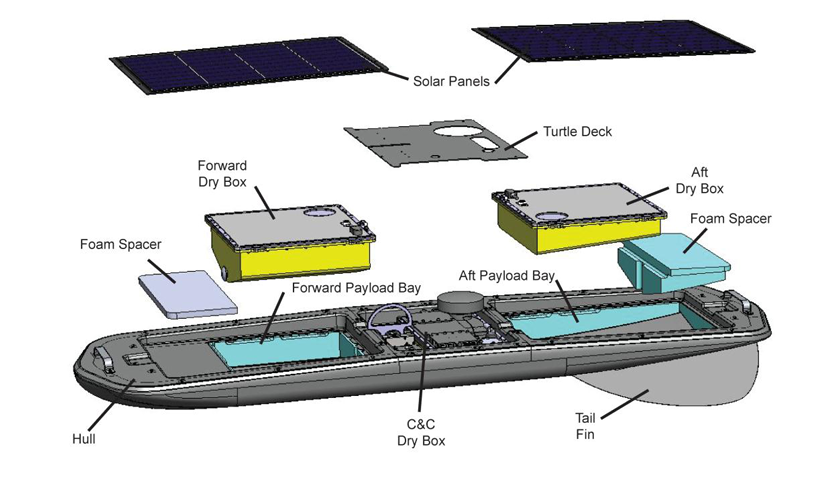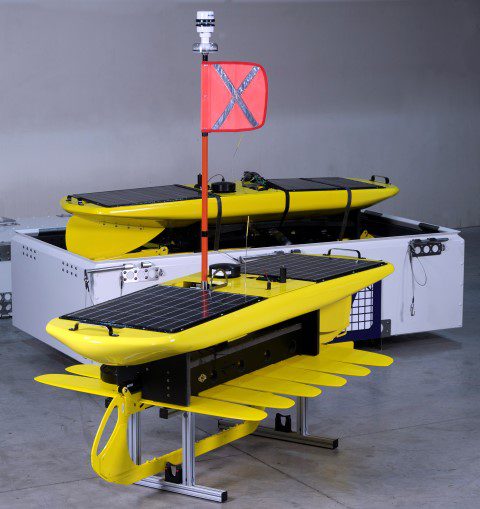BlueZone partners with over 50
world-leading original equipment
manufacturers and systems providers
WG04 Rapid Access Drybox
Flexibility and Easy Access for Wave Glider Prototyping
The WG04 Rapid Access Drybox (RAD) provides a flexible and easy to use method for prototyping of payloads for the Liquid Robotics Wave Glider.
The RAD provides rapid access to equipment and components that is useful when prototyping new Wave Glider payloads. During a prototyping phase it is often necessary to change equipment components and complete tests with different configurations so that the ease of access provided by the RAD can save time during the engineering development phase. The RAD features quick-acting spring claw toggle latches for closing and a single circular O-ring that is easy to seat and seal. Not tools are required for access.
SV2 and SV3 Wave Gliders
The WG04 RAD is tested and in-service with SV2 Wave Gliders operated by the Royal Australian Navy.
For more information on the WG04 Rapid Access Drybox, contact the team at BlueZone.
Key Features
Up to 25-hour mission duration
Speeds up to 4.2 knots
Increased module payload capacity
Search and recovery
Hydrography
Deep sea mineral exploration
Marine & Fisheries research
Product Enquiry
Related products
The Wave Glider Purge Kit provides a complete kit for nitrogen purge and pressurisation of the Wave Glider Command and Control Dry Box and Payload Box.
Read moreBy continuously harvesting energy from the environment, Wave Gliders are able to travel long distances, hold station, and monitor vast areas without ever needing to refuel. A unique two-part architecture...
Read moreWG02 Wave Glider Transport Case
Available in corrosion-free GRP or aluminium the Wave Glider Transport Case is designed to protect the WaveGlider vehicle for road and air transport under all conditions. The Transport Case includes...
Read moreRelated Articles
Ahead of the Tide: BlueZone’s Landmark IndoPAC 2025 Showcase
Celebrating 25 Years of Sovereign Capability The Indo Pacific International Maritime Exposition stands as the region’s premier showcase for commercial maritime and naval defence innovation—bringing together leaders from defence,...
Read MorePartnering for Performance: BlueZone Supports Kraken Robotics in Advancing KATFISH Capability
BlueZone Group to become Kraken’s Australian Sales Representative, Enhancing Sovereign Support for Cutting-edge Synthetic Aperture Sonar Systems We are thrilled to announce BlueZone Group have signed an agreement...
Read MoreSeeByte and BlueZone Group Forge Strategic Alliance to Strengthen Australian Naval Capabilities
BlueZone Group is proud to announce our appointment as the official Australian representative for SeeByte, a UK-based leader in advanced maritime defence and uncrewed systems technology. This strategic partnership marks...
Read More



